Stretching 2.5 kilometers from the heart of Budapest to Heroes’ Square, Andrássy Avenue stands as Hungary’s answer to the Champs-Élysées. This tree-lined masterpiece showcases the city’s golden age through Neo-Renaissance palaces, world-class cultural venues, and the historic Millennium Underground Railway running beneath your feet. Named after Prime Minister Gyula Andrássy and completed in 1885, this grand boulevard transformed Budapest into a European capital worthy of the Austro-Hungarian Empire.
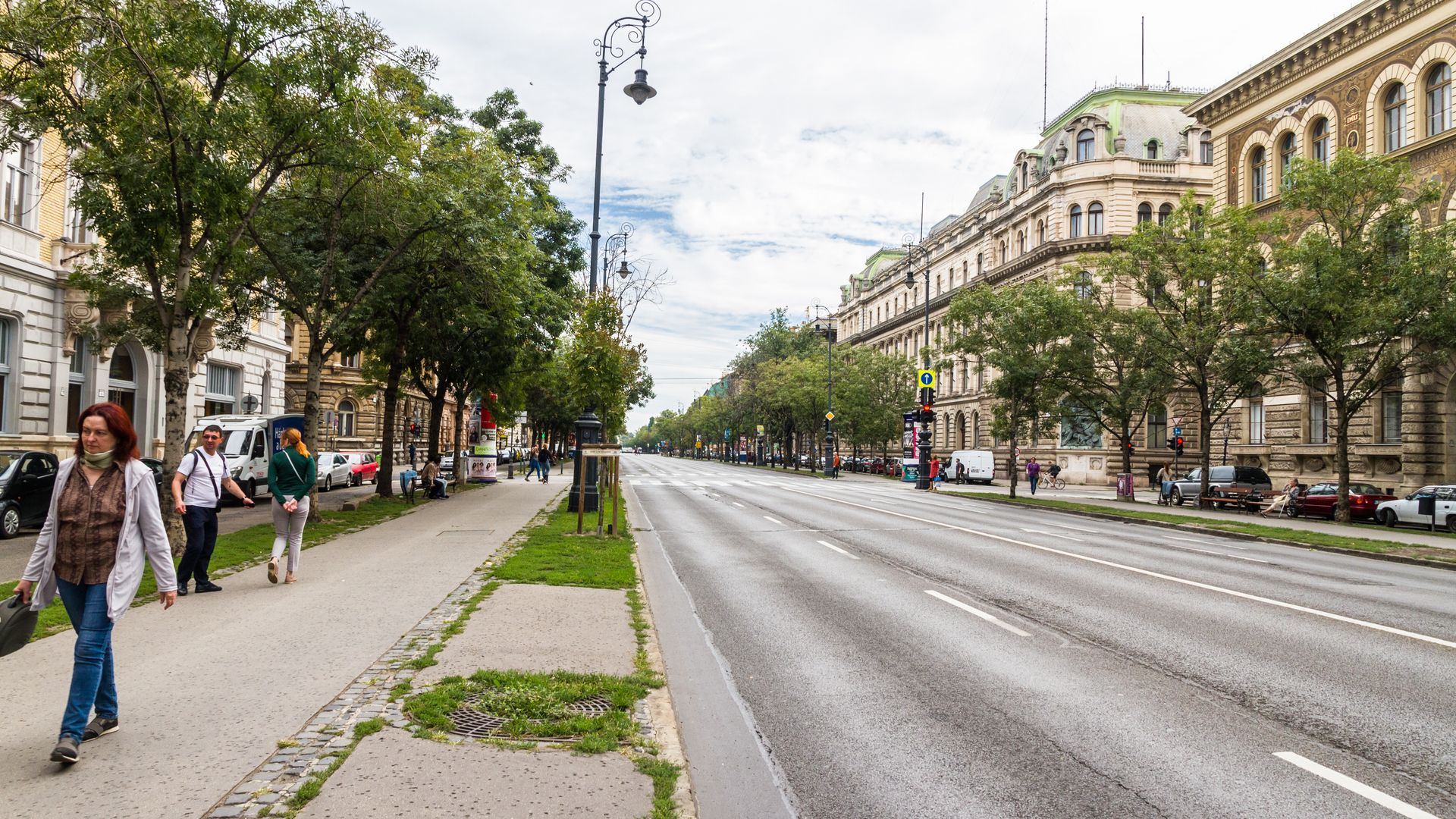
Highlights
- Marvel at the Hungarian State Opera House, Miklós Ybl’s architectural masterpiece featuring marble, gold, and mahogany interiors that rival Vienna and Paris
- Ride the UNESCO World Heritage Millennium Underground (M1), continental Europe’s first electric metro, which has been charming passengers since 1896 with its vintage yellow cars and original tiled stations
- Explore three distinct segments from urban sophistication near the Opera to villa-lined residential elegance approaching City Park, each offering unique architectural personalities
What to See and Do
Discover the Opera House District
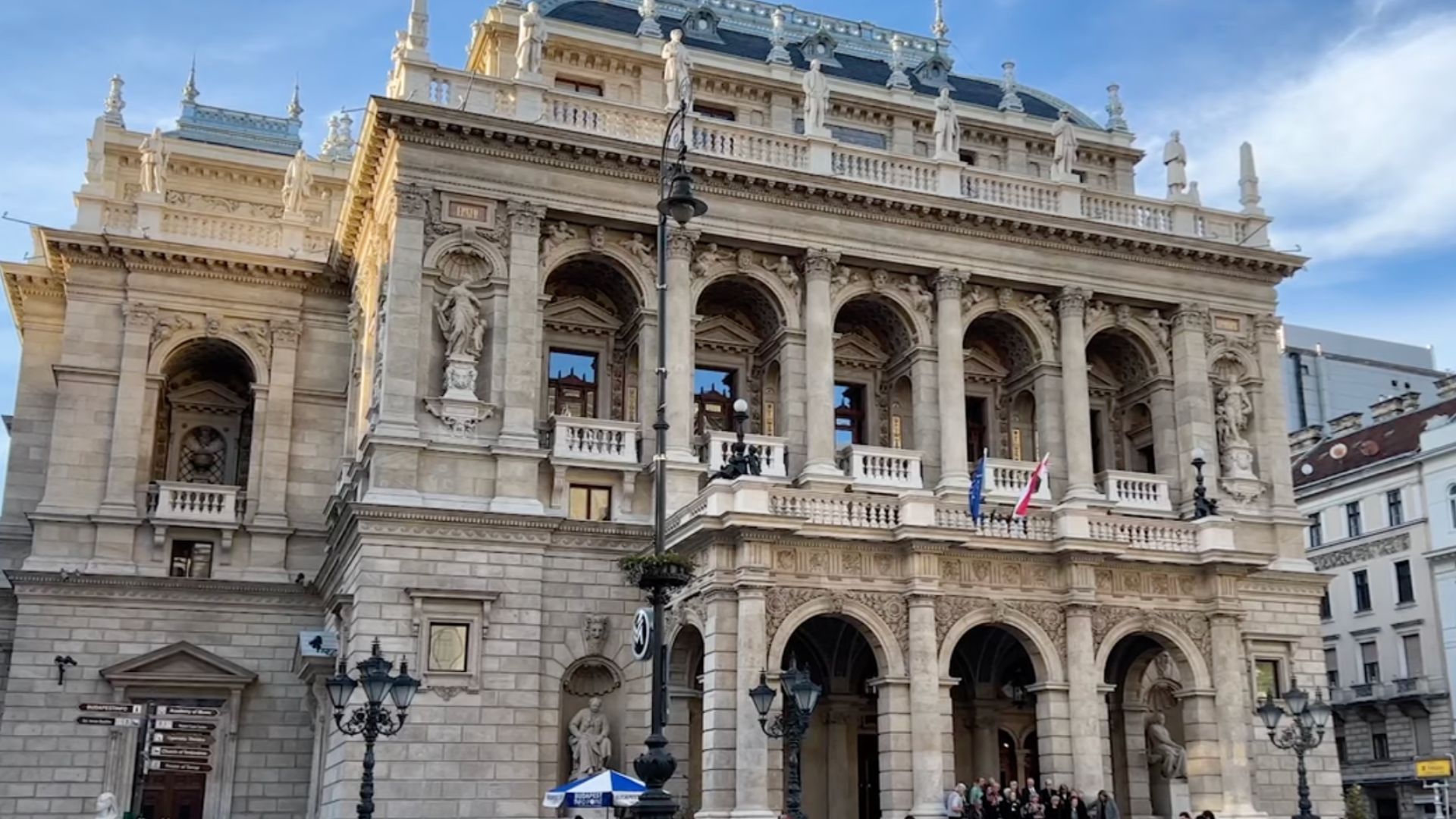
The Hungarian State Opera House anchors the avenue’s most prestigious section. This architectural gem, designed by Miklós Ybl and completed in 1884, showcases the pinnacle of Neo-Renaissance design. Stone carvings of Franz Liszt and Ferenc Erkel flank the entrance, while composers like Palestrina and Beethoven stand guard on the upper balustrade.
Inside, marble columns, gilded details, and mahogany accents create an atmosphere of imperial grandeur. The acoustics are legendary, attracting world-class performers who consider it among Europe’s finest venues. Guided tours reveal the opulent grand staircase, designed as much for seeing and being seen as for accessing the performance halls.
Across the street stands the equally impressive Drechsler Palace, originally designed by Ödön Lechner. This Renaissance beauty now houses a luxury hotel, but its facade remains a testament to Budapest’s architectural ambitions during the city’s golden age.
Experience the House of Terror Museum
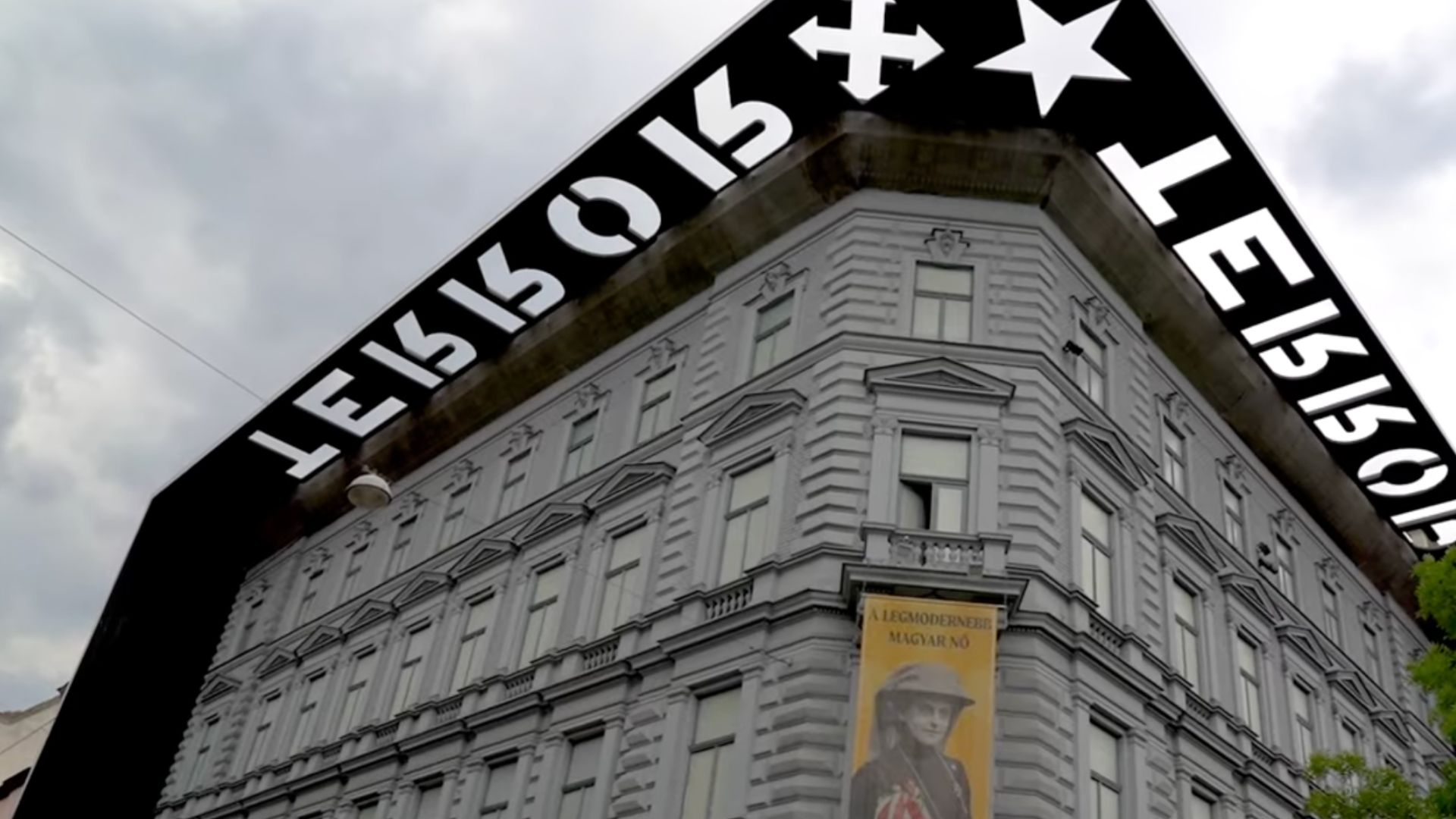
At number 60 Andrássy Avenue sits one of Budapest’s most powerful museums. The stark black exterior frames this Neo-Renaissance building that served as headquarters for both fascist Arrow Cross Party and communist secret police between 1944 and 1990.
The museum’s three floors chronicle Hungary’s darkest periods through immersive exhibits designed to shock and educate. The slow elevator descent to the basement prison cells is particularly haunting, accompanied by survivor testimonies. Original torture chambers, spy equipment, and a Soviet T-54 tank make this experience visceral rather than merely academic.
Many locals still find the subject matter difficult to discuss, making this museum both controversial and essential for understanding modern Hungary. The experience is intense but profoundly moving for those seeking to understand the human cost of totalitarian regimes.
Marvel at Kodály Körönd’s Perfect Circle
Halfway down the avenue, four Neo-Renaissance palaces form a perfect circle around this elegant roundabout. Named after composer Zoltán Kodály, who lived at number 89, this architectural marvel showcases how 19th-century urban planning could create harmony between buildings and public space.
Each quadrant features a statue honoring Hungarian heroes from the Ottoman wars. György Szondy, Miklós Zrínyi, Bálint Balassi, and “Blind” János Bottyán represent centuries of resistance against invaders. The small gardens with chestnut and sycamore trees add natural beauty to the formal architectural composition.
The curved facades, designed specifically to fit the circular layout, demonstrate the level of architectural coordination that made Andrássy Avenue a UNESCO World Heritage Site. One building houses the Kodály Memorial Museum, displaying personal items from the composer’s life.
Browse Luxury Shopping
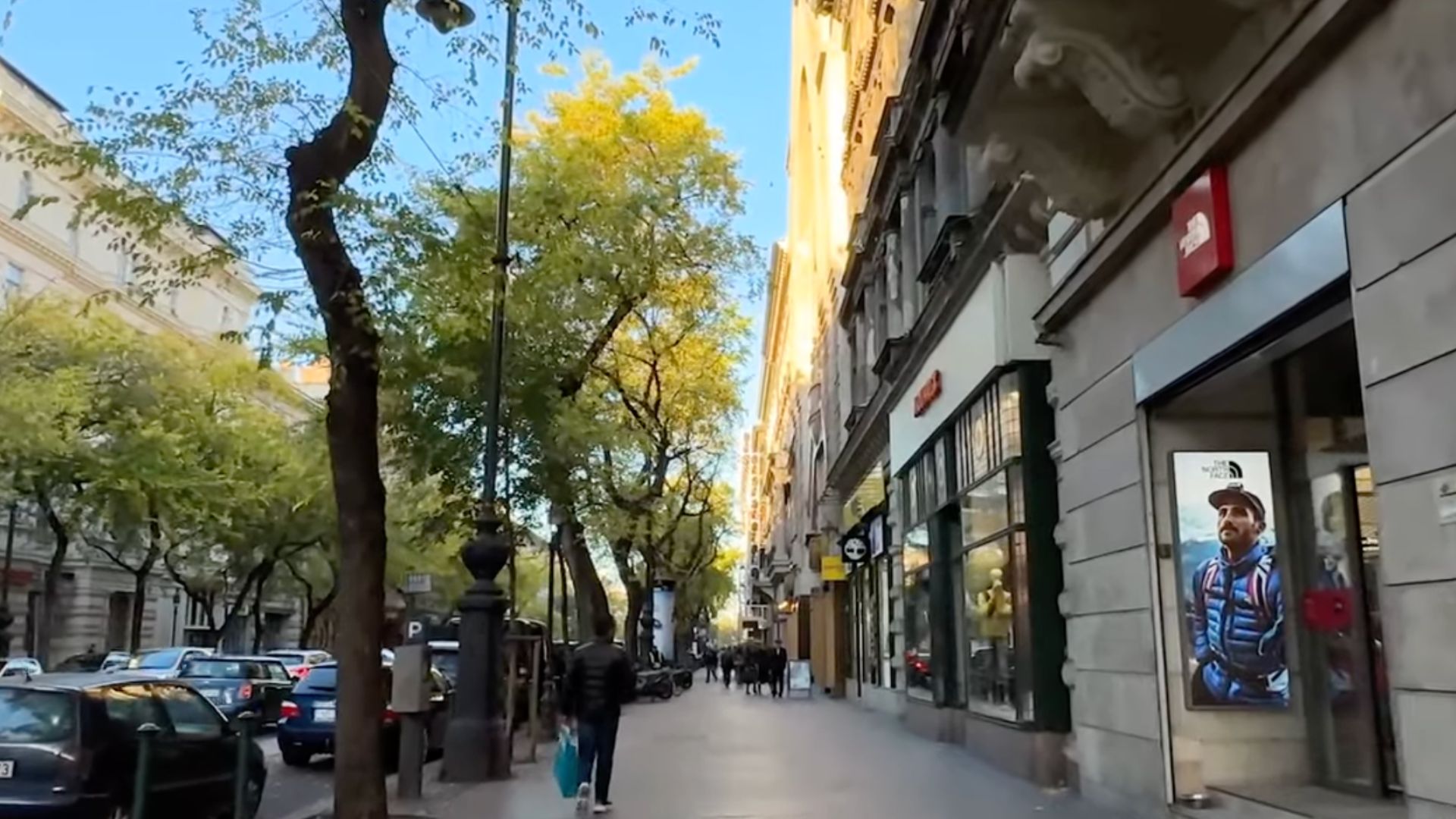
The avenue’s transformation into Budapest’s premier shopping destination mirrors its historical prestige. World-famous designers have opened flagship stores here, including Louis Vuitton, Gucci, Armani, Dolce & Gabbana, and Burberry. Window shopping becomes an art form when the displays are set against such magnificent architectural backdrops.
The contrast between 19th-century palace facades and 21st-century luxury retail creates a uniquely European shopping experience. Many stores occupy ground floors of historic mansions, where aristocrats once held salons and bankers made fortunes that built modern Hungary.
For more accessible shopping, side streets offer Hungarian designers, vintage finds, and local crafts. The area around Liszt Ferenc Square provides a mix of boutiques and cafes perfect for combining retail therapy with cultural exploration.
Ride the Historic Millennium Underground
The M1 metro line, affectionately called “the Little Underground” by locals, represents a technological marvel that still charms daily commuters and tourists alike. Built in just 21 months for the 1896 millennium celebrations, this was continental Europe’s first electric underground railway.
The vintage yellow cars and original tiled stations preserve the 19th-century atmosphere. Unlike modern metros, the M1 runs just below street level, more like an underground tram than a deep subway. Each station displays historical photographs showing the line’s construction and early operation.
Emperor Franz Joseph himself inaugurated the line on May 3rd, 1896, riding in a specially designed royal carriage. Today’s passengers experience the same route, though the journey to City Park now takes just 12 minutes instead of the original leisurely pace designed for sightseeing.
Explore the Three Distinct Segments
Andrássy Avenue’s character transforms as you walk from the city center toward Heroes’ Square. The first segment, running from Erzsébet Square to Oktogon, features the widest roadway with service roads and dense urban architecture. Palace-like buildings house everything from luxury shops to the headquarters of Hell Energy Drinks company.
The middle section, from Oktogon to Kodály körönd, introduces tree-lined medians and more residential character. Buildings here showcase different architectural styles, from Neo-Renaissance mansions to early Art Nouveau experiments. The House of Terror Museum and various cultural venues define this stretch.
The final segment widens even further, with villa-style buildings set back behind small front gardens. Embassy buildings and luxury residences create a more suburban feel while maintaining the avenue’s grandeur. This progression from urban density to parkland elegance demonstrates masterful 19th-century city planning.
Visit Side Street Treasures
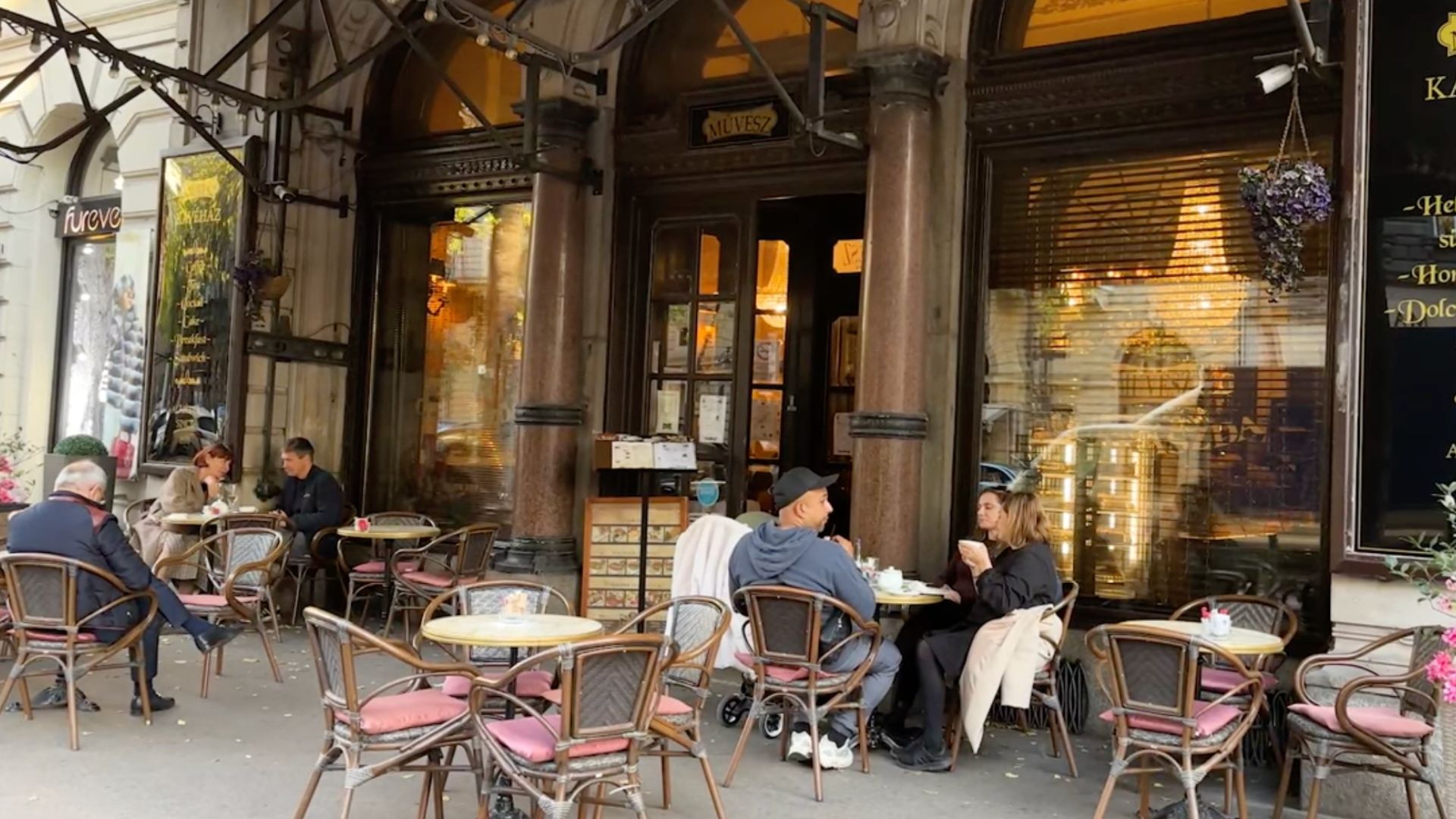
While the main avenue commands attention, the side streets reveal Budapest’s daily life and hidden gems. Liszt Ferenc Square buzzes with outdoor cafes and restaurants, anchored by the Art Nouveau Music Academy building. The square’s pedestrian-friendly design makes it perfect for people-watching over coffee or Hungarian wine.
Jókai Square offers a quieter alternative with tree-shaded benches and local cafes frequented more by residents than tourists. The square’s intimate scale contrasts beautifully with the avenue’s grandeur, showing how varied urban experiences can exist within blocks of each other.
Nagymező Street, running parallel to Andrássy, has earned the nickname “Broadway of Budapest” for its concentration of theaters. The Budapest Operetta Theatre, Thália Theatre, and several smaller venues create a cultural district that comes alive during evening performances.
Plan Your Visit
Getting There
Metro: The M1 yellow line runs directly under Andrássy Avenue with stations at Opera, Oktogon, Vörösmarty utca, Kodály körönd, Bajza utca, and Hősök tere (Heroes’ Square). Start at Vörösmarty tér in the city center.
Walking: The entire 2.5-kilometer avenue makes for a pleasant stroll, taking about 45 minutes without stops. Wide sidewalks and frequent benches accommodate all walking abilities.
Tram: Lines 4 and 6 connect at Oktogon, providing access from other parts of the city. These 24-hour trams offer convenient transfers for evening cultural events.
Best Time to Visit
Morning (9am-11am): Peaceful atmosphere for photography and architecture appreciation. Museums and shops are opening, but crowds haven’t yet formed.
Afternoon (2pm-5pm): Perfect for combining sightseeing with shopping and cafe stops. Street life reaches its peak as locals mix with visitors.
Evening: The Opera House and avenue’s palaces are beautifully illuminated. Cultural venues offer performances, and restaurants come alive with dinner service.
Seasonal Considerations: Spring and fall provide ideal weather for walking the full length. Summer brings crowds but also outdoor cafe culture. Winter highlights the avenue’s elegant lighting and cozy indoor venues.
Map & Address
Andrássy Avenue (Andrássy út) 1061-1146 Budapest, Hungary
The avenue runs 2.5 kilometers from Erzsébet tér (Elizabeth Square) near St. Stephen’s Basilica to Heroes’ Square (Hősök tere) at City Park.
Nearby Attractions
St. Stephen’s Basilica sits just steps from the avenue’s starting point, offering dome views and Hungary’s most sacred relic.
Heroes’ Square provides the perfect endpoint with its Millennium Monument and Museum of Fine Arts.
City Park (Városliget) extends beyond Heroes’ Square with Széchenyi Thermal Baths, Vajdahunyad Castle, and the Budapest Zoo.
Hungarian Parliament Building lies within walking distance, showcasing Gothic Revival architecture along the Danube.
Where to Stay
Andrássy Avenue offers some of Budapest’s most prestigious accommodations, placing guests in the heart of the city’s cultural and architectural treasures.
W Budapest occupies the historic Drechsler Palace directly across from the Opera House. This luxury hotel transforms the former Ballet Institute into a modern design showcase with 151 rooms including dramatic black and white suites inspired by Swan Lake. The rooftop terrace provides stunning Opera House views, while the basement speakeasy and AWAY Spa create an underground retreat.
Callas House provides intimate boutique accommodations steps from the Opera House. This charming property offers Art Deco and Art Nouveau styling in a beautifully restored palace. The hotel’s small scale ensures personalized service, while its location puts guests directly on the avenue’s most prestigious stretch.
Hotel Moments Budapest features 99 elegant rooms clustered around a glass-domed courtyard at number 8 Andrássy Avenue. This four-star property balances modern comfort with historic architecture, offering complimentary breakfast and a central location just minutes from St. Stephen’s Basilica. The Lebanese restaurant Zenobia provides on-site dining.
Corinthia Budapest sits on the Grand Boulevard near Andrássy Avenue in a beautifully restored 19th-century palace. This luxury hotel preserves original architectural features while offering modern amenities including the renowned ESPA spa with thermal pools reminiscent of Budapest’s famous baths.
Staying on or near Andrássy Avenue provides unmatched access to the city’s cultural venues, shopping, and dining while offering the convenience of the M1 metro line literally beneath your feet.
Tips for Your Visit
- Wear comfortable shoes for walking the full length. The avenue’s grandeur encourages leisurely exploration rather than rushing.
- Bring a camera for the architectural details. Each building offers unique decorative elements worth capturing.
- Plan museum visits in advance as the House of Terror can be emotionally intense and requires several hours for full appreciation.
- Try the M1 metro even if you’re comfortable walking. The historic trains and stations are attractions themselves.
- Check Opera House tour times if interested in seeing the interior. Guided tours provide access to areas not visible during performances.
- Explore side streets for authentic local experiences away from the main tourist flow.
- Allow a full day if you want to visit museums, shop, dine, and truly absorb the avenue’s atmosphere.
Dining Along the Avenue
Opera Café on Hajós utca serves excellent specialty coffee and pastries in a classic setting near the Opera House.
Big Fish at number 44 offers some of Budapest’s best seafood, including fish and chips made from fresh ingredients in a bistro atmosphere.
Matinee provides perfect croissants and pretzels for a mid-walk snack, popular with both locals and visitors.
Liszt Ferenc Square features numerous restaurants with outdoor seating, ideal for longer meals while people-watching.
Did You Know? (5 Fascinating Facts!)
- The avenue has been renamed five times in the last century, reflecting Hungary’s turbulent history. It was called Stalin Avenue (1950-1956) and People’s Republic Avenue (1957-1990) during communist rule.
- The Hell Energy Drinks company, now famous worldwide, has its headquarters in one of the avenue’s Neo-Renaissance palaces, proving that historic buildings can house modern businesses.
- The Millennium Underground’s original cars ran every two minutes and could transport 35,000 people daily, impressive capacity for 1896 technology that still serves 103,000 daily passengers today.
- The avenue’s 96-meter width at Heroes’ Square matches the Parliament Building’s height, both honoring the year 896 when Magyar tribes first settled the Carpathian Basin.
- During World War II, several avenue buildings served as safe houses for Jewish refugees while the House of Terror operated as Nazi and later Soviet headquarters just blocks away.
History
- 1872: Construction begins under Prime Minister Gyula Andrássy’s urban development plan to connect the city center with fresh air and nature at City Park
- 1885: The grand boulevard opens to the public, featuring Neo-Renaissance palaces designed by Hungary’s most distinguished architects including Miklós Ybl
- 1894-1896: The Millennium Underground Railway construction transforms transportation, creating continental Europe’s first electric metro
- 1896: Emperor Franz Joseph inaugurates both the completed avenue and the underground railway during Hungary’s millennium celebrations
- 1950-1990: Communist era brings renaming and political tension, with the House of Terror serving as headquarters for oppressive regimes
- 2002: UNESCO declares the avenue and its underground railway a World Heritage Site, recognizing both architectural and technological significance
- Present: Modern luxury shopping coexists with preserved 19th-century architecture, creating Budapest’s most prestigious address
FAQ
How long does it take to walk the entire avenue?
Walking the full 2.5 kilometers takes about 45 minutes without stops, but most visitors spend 3-4 hours exploring museums, shops, and cultural sites along the way.
Is the M1 metro worth riding even if I prefer walking?
Why not do both? The vintage yellow cars and original 1896 stations are historic attractions themselves. The underground railway museum at Deák Ferenc tér provides additional context for this UNESCO World Heritage transportation system.
What’s the best starting point for first-time visitors?
Start at Erzsébet tér (near St. Stephen’s Basilica) and walk toward Heroes’ Square. This direction follows the avenue’s historical development and provides the most dramatic architectural progression.
Are there good restaurants directly on the avenue?
Yes, but the best dining experiences are often found on the side streets like Liszt Ferenc Square. The avenue itself offers cafes and a few quality restaurants, with Big Fish being a standout for seafood lovers.
Map & Address
Andrássy Avenue, Budapest, 1061 Hungary
